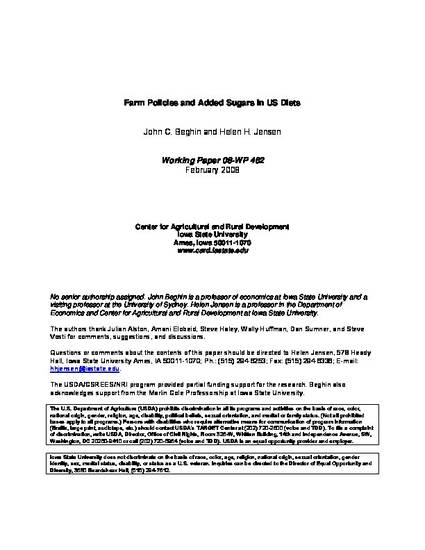
We examine how US farm policies for sweetener crops have affected the consumption and composition of sweeteners in the US diet. R&D expenditures have lowered the unit cost of commodities used in sweeteners, but have generated more technical progress in corn than in sugar crops, increasing use of corn in food production, ceteris paribus. Commodity programs have raised the price of sugar and decreased the price of corn. Thus, high fructose corn syrup (HFCS) became an inexpensive substitute for sugar in food from 1970 on. However, the effect of policy on ingredient prices has become less important over time. Today the farm value share in sweetened food is below 5% and HFCS is a specialized input in many food items, with limited substitution possibilities. The current link between US sweetener consumption and farm policy is weak. Recent evidence from other high-income countries shows little relationship between sweetener consumption and sugar policies.
Available at: http://works.bepress.com/john-beghin/106/

This is a working paper of an article from Food Policy 33 (2008): 480, doi: 10.1016/j.foodpol.2008.05.007.